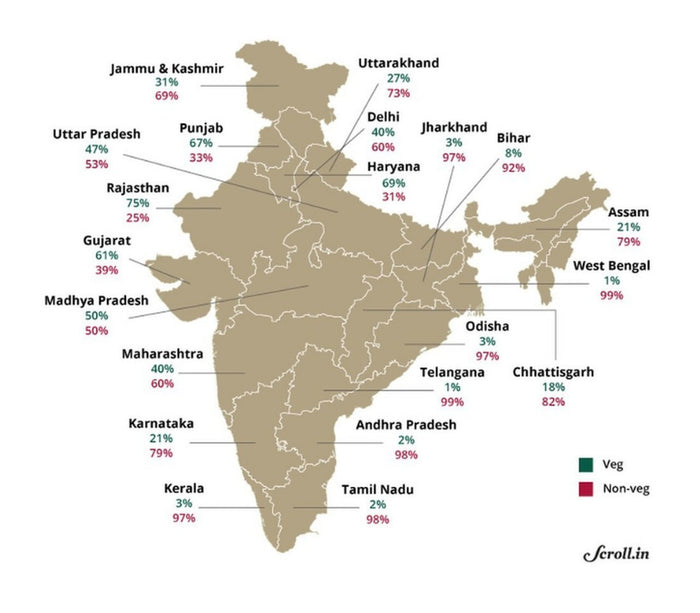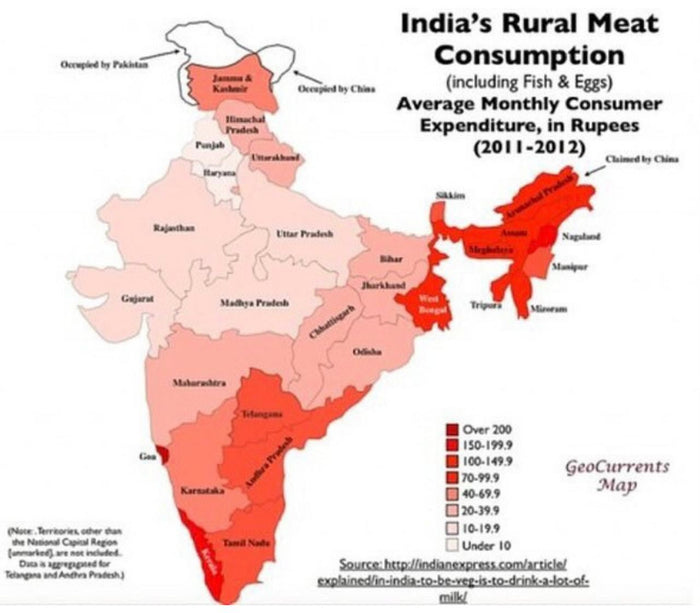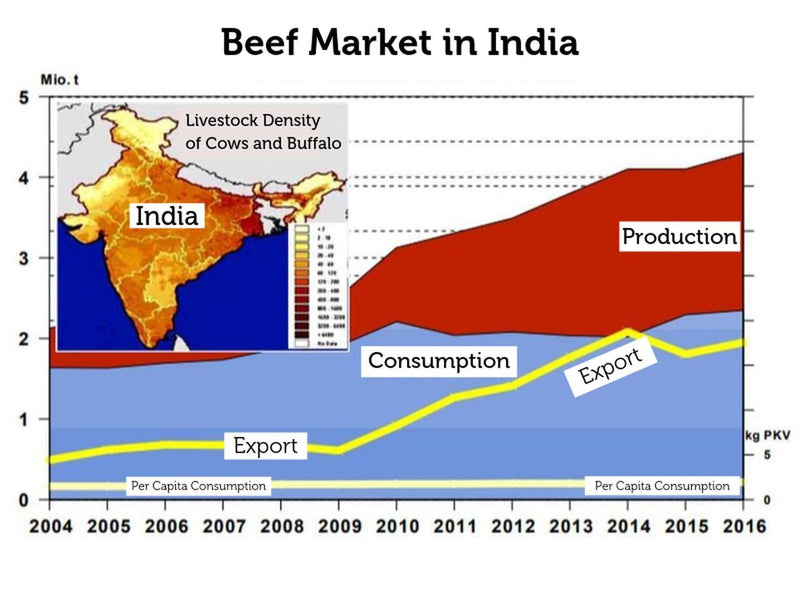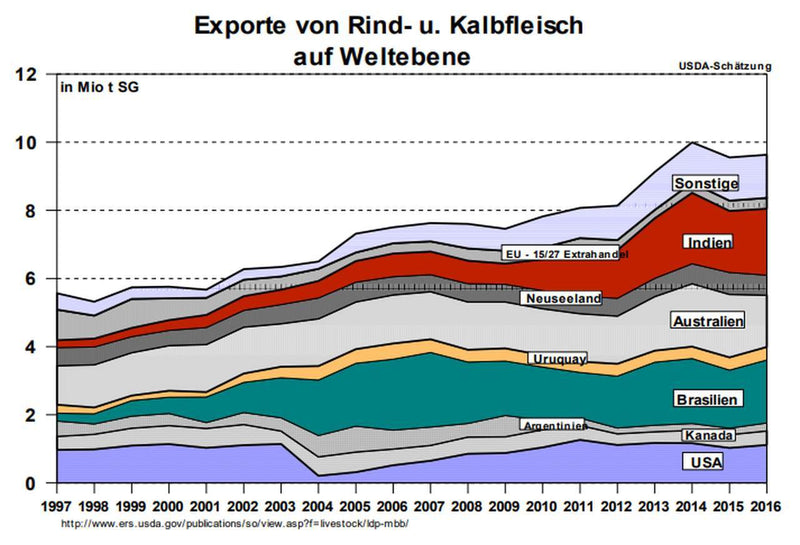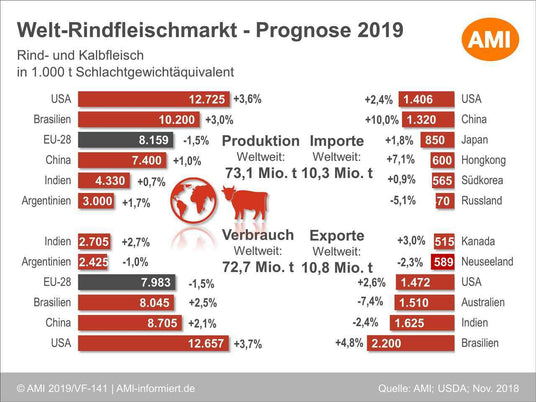
Does cattle slaughter really take place in India?
India is now consideredone of the largest beef producers worldwide. For comparison: In the EU, about 8 million tons of beef are produced annually. In India, it is 4.3 million tons of meat. Beef in India is therefore not only consumed but is now also produced on a large scale. Most of India's slaughterhouses are in the south (Chennai) and the north (Uttar Pradesh and Kolkata). Even 50% of the meat for export to Qatar and Saudi Arabia comes from these places. Why? The slaughter of animals follows precise regulations that are rooted in Islam. Only if the meat is“halal”is it eaten in Islamic-influenced places like Qatar.
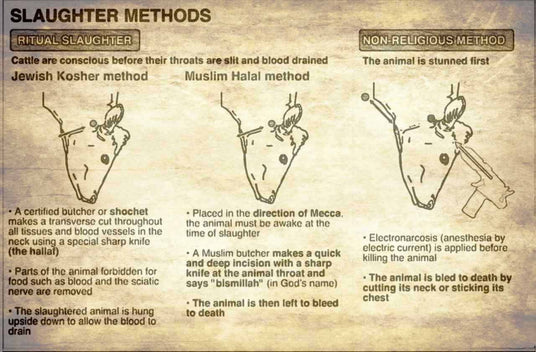
Slaughtering: The significance of halal meat
The slaughter of healthy animals isreligiously justified in Islam and Judaism. Both in the Quran and the Torah, there is a prohibition on the consumption of carrion and blood. According to religious belief, the soul resides in the blood. Based on this, there is a regulation that the animal should lose the maximum amount of blood during slaughter and the subsequent treatment of the meat.
There are also precise regulations for the slaughtering process. During slaughter, the animal's carotid arteries, jugular veins, trachea, and esophagus are usually cut without prior stunning. Because the spinal cord remains intact, muscular activity continues, and most of the blood is pumped out of the body. If done correctly, the animal will die within a few seconds, as the suffering of the animal should be minimized during this slaughter.
After slaughter, there is a post-treatment of the dead animal. In Jewish slaughter, this involves washing and salting the meat, as well as an inspection of the meat. Here, the meat and organs are checked for health, looking for diseases, tumors, and irregularities that would make the meat impure. Only after successful post-treatment is the meat “kosher” in Judaism or “halal” in Islam and suitable for consumption.
Where do the animal hides we use for our Gusti Leder products come from?
Films by Peta show how cows are abducted and brought to Bangladesh, only to return to India as hides. This trade accounts for less than 15% of the total cattle leather in India. Instead, the hides are more often produced and processed locally.
Increasingly, meat and hides are also being sent to India in a preserved (salted) state from the EU and South America. Meat production in the EU or South America is promoted. Thus, a preserved hide can sometimes even be cheaper than a hide from India. Therefore, prices for hides on the raw leather market are likely to decrease in the long term.
The way the animal is slaughtered always depends on the meat consumer. For example, meat produced in India is shipped to Qatar and is therefore largely halal. In southern India, where many Christians live, the meat is consumed just as it is in Europe and Germany. The import of preserved meat from Europe is therefore not uncommon.
Source: agrarinfos.de
Slaughtering of Animals
In the slaughtering of animals in the European and South American regions, livestock are killed by exsanguination. In Germany, for example, only trained butchers are allowed to carry out the slaughter in compliance with precise regulations. The animals may only be slaughtered after appropriate stunning, during which the higher brain functions are switched off.
There are various methods, such as the use of special captive bolt devices (for animals with a strong skull), electrical stunning (for smaller livestock), or the use of stunning inert gases.
This is intended to minimize the pain of the animals. Despite compliance with the regulations, there are always cases where the animals are not sufficiently stunned for various reasons. After stunning, the animals are hung up and then bled. The butcher cuts the blood vessels in the neck of the animals. The death of the animals occurs due to immediate blood loss and thus lack of oxygen in a short time.
Gusti Leder against Animal Cruelty: Why We Still Work with Animal Hides
We at Gusti Leder condemn both slaughtering and ritual slaughter equally, as both methods, despite all regulations, are associated with pain and fear for the animals. Meat consumption kills life! We support both the reduction of meat consumption and a complete renunciation. The increase in meat production and consumption in India are not desirable developments!
Why do we still want to work with animal hides? Our products are made from a waste product of the meat industry. Whether slaughtered in India or in the EU and imported to India, no animal is killed for its hide. If this were the case, a bag would cost €800 and not €80. A cow weighs 800-1200 kg, of which 85% is meat and the rest is hide and bones. The sustainable processing of natural resources is something we can support.
In the production of our leather products, we utilize a by-product of the meat industry, which would be discarded if not used. Our leather is therefore a hundred percent recycled product.

